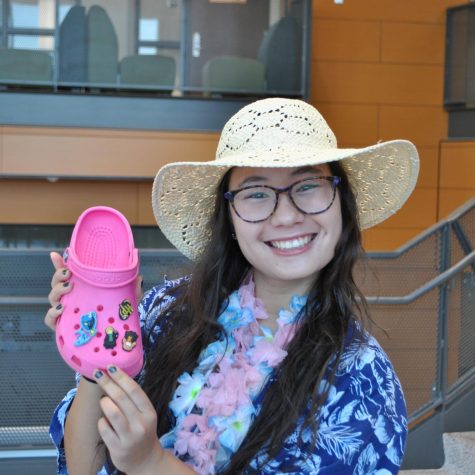Self-Piercing Trend Emerging as a Means of Expression for Teens
February 5, 2018
Piercings are a way for students to express their style and individuality. But what is a student to do who either doesn’t have the funds or can’t convince their parents to give them permission to poke another hole in their face? Some EHS students are taking matters into their own hands and either piercing themselves or having friends help them out.
Junior Caroline Sundal has pierced both herself and others. “Every once in a while, I want to try something different. And the piercings I don’t want, I let close up and there’s no scarring at all,” Sundal said.
After noticing Sundal’s new piercing, a couple of friends asked her to pierce them as well. “Jewelry and piercings are a part of self-expression so it’s fun to do something that’s not as permanent as tattoos because piercings can always close up,” junior Addie McCuskey said.
Other self-piercers garnered attention and clients using social media. “I live streamed on Instagram one of my…piercings so people were like ‘Oh my gosh, do mine’ and I was like ‘Ok,’ so then I did,” junior Taylor Succio said.
The number one rule concerning DIY piercings is to keep everything clean. Piercers use a type of saline solution to clean the earrings, ears, and needle. “[You have to] make sure everything is clean and sterile” Sundal said. If the materials are not sterilized, the new piercing runs the risk of becoming infected. “I pierced and I didn’t sterilize [the needle], so they got infected and I had to close them,” Succio said. Additionally, the self-piercers noted, handwashing is another critical component as your hands are a major part of the process. They suggest utilizing the internet for more information about how to ensure your environment is clean and safe for piercing at home. “Do your research and make sure that you are prepared,” McCuskey said.
The self-piercers Zephyrus interviewed all follow a similar process of poking a sterilized needle through the flesh into an object held behind the earlobe such as a cork or a cut apple in order to ensure the highest amount of pressure possible and a steady surface. “I cleaned off an apple and used that behind my ear…Then, I had a sharp earring that I poked through my ear,” Sundal said. Once the ear is pierced, “you’ll hear a pop of the needle going through your skin,” Succio said.
Alternatively, you can use a piercing gun. However, there is higher risk involved when piercing cartilage with a gun. “The only thing you have to be worried about if you use a gun is that if it goes too fast, the cartilage can shatter,” Sundal said.
Sundal’s advice to those who are intrigued by the idea of self-piercing or having a friend do a piercing for them? Make sure you’re confident it’s something you really want to do. “If you’re really afraid, just don’t do it,” otherwise, “do it with someone you trust,” Sundal said.




Drew Cole • Feb 6, 2018 at 9:38 am
Hey it’s your friendly pierced Physics teacher here, and I just wanted to point out that piercings can most definitely leave holes and scarring. Most commonly this happens when increasing gauge size, but it can happen with smaller piercings as well. Before I switched to the vertical labret (lip piercing) that I have now, I had a traditional labret piercing that, when removed, has left a small hole filled with scar tissue. It is difficult to see due to my goatee but it is there. And for any DIYers or those curious please be thorough and confident in your safety procedures. If you are in doubt, but really want that piercing, go to a professional!